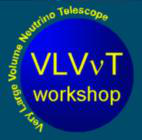Orateur
Alexander Kappes
(UW-Madison)
Description
We quantitatively address whether IceCube, a kilometer-scale neutrino detector under construction at the South Pole, can observe neutrinos pointing back at the accelerators of the Galactic cosmic rays. The photon flux from candidate sources identified by the Milagro detector in a survey of the TeV sky is consistent with the flux expected from a typical cosmic-ray generating supernova remnant interacting with the interstellar medium. We show here that IceCube can provide incontrovertible evidence of cosmic-ray acceleration in these sources by detecting neutrinos. We find that the signal is optimally identified by specializing to events with energy above 40 TeV where the atmospheric neutrino background is low. We conclude that evidence for a correlation between the Milagro and IceCube sky maps should be conclusive after several years.

